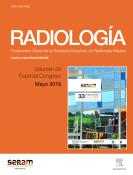0 - Columna degenerativa: Nomenclatura 2.0
School of Medicine University of North Carolina at Chapel Hill, Chapel Hill, Estados Unidos.
Objetivo docente: 1. Do we understand MRS and how reliable and reproducible is it? 2. Is it helpful in the initial tumor evaluation? 3. Is it useful in planning biopsy and treatment? 4. Is it useful to follow the effects of treatment?
Discusión: MRS depicts only metabolites with high concentrations and their meaning is not completely understood. Every peak is a combination of several metabolites and thus NAA, a neuronal marker is a combination of NAA + NA glutamate. Total choline is a marker of cellular membrane density which total creatine reflects intracellular energy status. In tumors, lactate reflects cell ischemia and lipids reflect necrosis. In adult supratentorial tumors both metabolites imply higher grades and poorer prognosis. 2-hydroglutarate is a newly recognized marker of IDH1 mutation in gliomas and thus reliably identifies those tumors which will have a better prognosis. Reliability and reproducibility of MRS results is now less of an issue but still depends on the sequence used, field homogeneity, and signal-to-noise. Despite these caveats, MRS shows no NAA in tumors originating outside of the CNS (ie: metastases, meningiomas) and shows elevation of choline outside of tumor margins and even in normal brain in diffusely infiltrating tumors such as astrocytomas but no in tumors that are surrounded by a capsule or pseudo-capsule such as metastases. MRS may be false negative in some astrocytomas. MRS is helpful to determine the area to be biopsied and this should be the one contained with the voxel showing the highest choline elevation to obtain the most representative specimen. Unfortunately, MRS is not helpful in the differentiation of true vs. pseudo progression as both show elevation of choline and markers of high grade such as lipids and lactate. Regardless of these issues, MRS is still helpful to: differentiate a primary glioma from metastases, mapping of glioma (tumor vs. edema), determining best biopsy site, and determine the presence of IDH1 mutation.






 Cartas de presentación
Cartas de presentación

